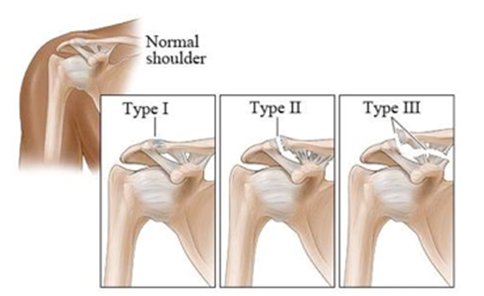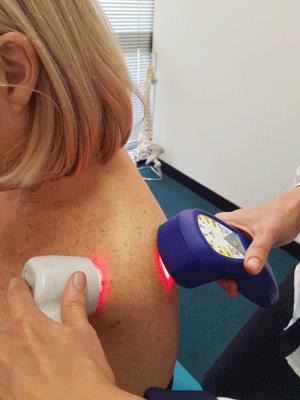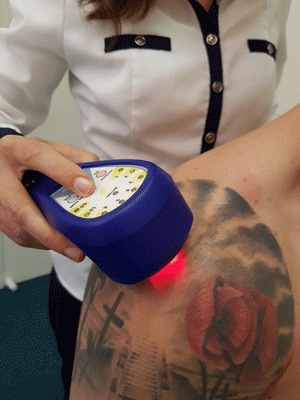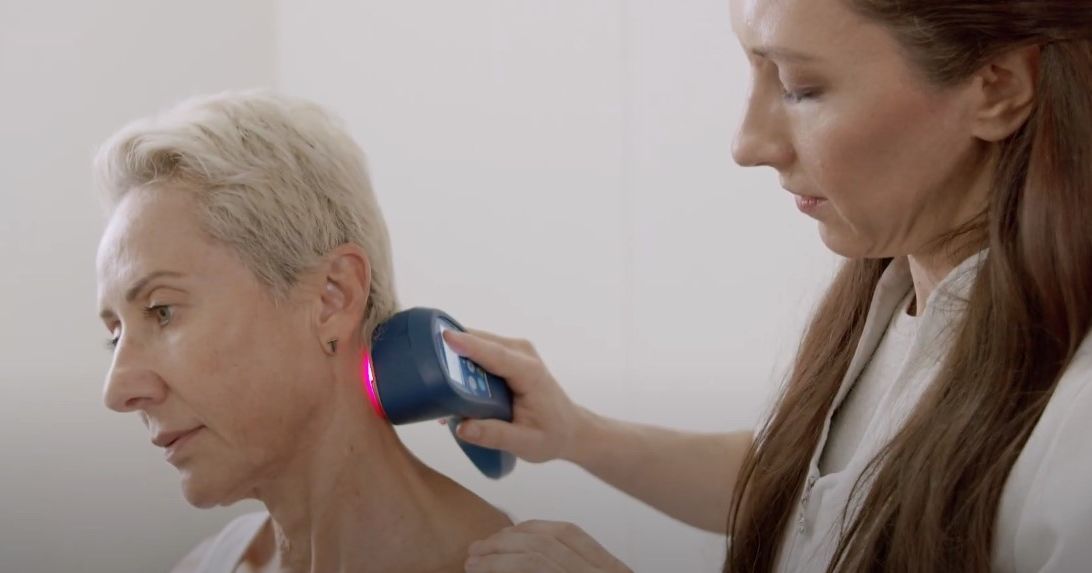The Acromioclavicular (AC) joint makes up part of the shoulder structure. It is the joint at the top of your shoulder made up of the lateral end of the clavicle and the scapula.
The AC /shoulder joint allows for overhead and across the body movements of the arm and also transfers forces from the arm to the rest of the body during movements like pushing, pulling and lifting. When the AC joint is disrupted, it is called a shoulder or AC joint separation or an AC joint sprain and it is a consequence of an injury that results in overstretching of the surrounding ligaments. The degree of AC joint injury can vary from a mild strain to a complete tear of one or more of the surrounding ligaments. An AC joint sprain will be suspected by your primary health care provider when you present with a traumatic onset of shoulder pain following either a fall on an outstretched arm or a fall onto the top of the shoulder.
Additionally, other symptoms include pain at the top of the shoulder that may be aggravated by heavy lifting, overhead and across the body movements, there may be some swelling or bruising present over the top of the shoulder and loss of shoulder movements. An AC joint sprain is usually graded by severity. Grade 1 is a partial tear of the AC ligament without any instability. Grade 2 is a rupture of the AC ligament and a partial tear of the coracoclavicular ligaments. Grade 3 is rupture of both the AC and coracoclavicular ligaments.

Treatment and management of shoulder sprain Initial treatment for any soft tissue injury consists of the RLCER protocol – rest, laser, compression, elevation and referral within the first 48-72 hours and NSAID’s (anti –inflammatory). The aim is to reduce the bleeding and damage within the joint and also to reduce swelling and pain. A period of six weeks is usually needed for the ligaments to heal completely, therefore, it is advised to protect the AC joint ligaments from overstretching the immature scar tissue. It may be helpful to use a sling, taping or a shoulder brace to stabilize and de-load the AC joint to further assist in the healing process.
When returning back to usual activity, including sports and rehabilitation exercises it is important to do this gradually to avoid risk of recurrence of injury. Following a period of rest and low level laser therapy, grade 1 and 2 injuries sprains can be introduced to mobility exercises but only once shoulder movement is pain free. Conservative management of grade 3 AC joint separations has been demonstrated to be as effective as surgery in the long-term. Furthermore, manual therapy such as joint mobilisations may assist in reducing pain and restoring normal range of motion within the shoulder joint.
Acute painful AC joint does not require intense manual therapy however, as your range of motion and strength progresses more intense manual therapy may be performed to increase range of motion.


Low level laser Therapy- Perth Low level laser therapy may be used for AC joint sprains to assist with pain management. PBM protocol suggests to start with draining the axilary lymphatics chain. An inhibitory protocol for pain management can be used up to 3x/day and once the pain is manageable the stimulatory protocol can be used for optimum tissue repair.
Here at Lakeside Laser we are located in Gnangara, 6077 – central to Perth’s northern suburbs. We have regulars coming to us for treatment from surrounding suburbs of Landsdale, Wanneroo, Wangara, Woodvale, Hillarys, Sorrento, Warwick, Tapping, Currambine and Kallaroo.
Please call us on 0468 429 111 to book an appointment to see Dr Linda Schiller our trained technician or you can visit our website www.lakesidelaser.com.au.



